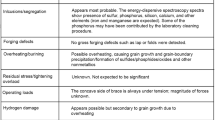Abstract
The concept of diagnostic accuracy is examined and redefined to support specific criteria for sensor placement. If the correctness of diagnoser operation is assumed, then any failure to diagnose accurately must be attributable to an inadequacy of sensor data. Inaccuracy in diagnoses can be expressed solely in terms of additional candidates whose faults cannot be ruled out. With ambiguity as the determiner of the quality of a diagnosis, user-defined diagnosability requirements can be expressed in terms of the types and instances of components which are permissible exceptions to perfect diagnosis. This requires a working diagnoser and a simulator, along with sets of system configurations, component fault modes, potentially measurable parameters, and uniqueness requirements for fault isolation. From these, the diagnosability of individual components can be determined for a particular attached subset of the available sensors. An optimum sensor assignment is one that satisfies the most requirements with a fixed number of sensors or, conversely, that minimizes the sensor requirements to achieve a given threshold of diagnosability. The considerable complexity of this search is reduced by exploiting sensor set minimality, structural knowledge, and diagnosis-free extension to the system level. Global optimization and sensor allocation do not add to the number of diagnoses required for diagnosability analysis. Finally, corrective measures are discussed for use when residual costs remain too high, or when redundancy is too low.
Similar content being viewed by others
References
R. Davis and W. Hamscher, Model-based reasoning: Troubleshooting, in:Readings in Model-Based Diagnosis, eds. W. Hamscher, L. Console and J. de Kleer (Morgan Kaufmann, San Mateo, CA, 1992), pp. 3–24.
J. de Kleer and B.C. Williams, Diagnosing multiple faults, Artificial Intelligence, 32 (1987) 97–130.
J. de Kleer and B.C. Williams, Diagnosis with behavioral modes, in:Proc.11th Int. Joint Conf. on Artificial Intelligence (IJCAI-89), Detroit, MI, USA, 1989, pp. 1324–1330.
J. de Kleer, Focusing on probable diagnosis, in:Proc. 9th Nat. Conf. on Artificial Intelligence (AAAI-91), Anaheim, CA, USA, 1991, pp. 842–848.
R.J. Doyle and U.M. Fayyad, Sensor selection techniques in device monitoring, in:Proc. 2nd Annual Conf. on AI, Simulation, and Planning in High Autonomy Systems, IEEE Computer Society Press number 2162, Cocoa Beach, FL, USA, 1991, pp. 154–163.
S. Chien and R.J. Doyle, A model-based reasoning approach to sensor placement for diagnosability, in:Proc. 2nd Int. Workshop on Principles of Diagnosis, Milan, Italy, 1991.
O. Raiman and J. de Kleer, Critical Reasoning, in:The Working Papers of the 3rd Int. Workshop on Principles of Diagnosis (DX-92), Rosario, WA, USA, 1992.
R. Reiter, A theory of diagnosis from first principles, Artificial Intelligence 32 (1987) 57–95.
E.A. Scarl, J.R. Jamieson and C.I. Delaune, Diagnosis and sensor validation through knowledge of structure and function, IEEE Trans. Syst. Man Cybern. SMC-17(3) (1987).
E.A. Scarl, Diagnosability and sensor reduction, in:Proc. 2nd Annual Conf. on AI, Simulation, and Planning in High Autonomy Systems, IEEE Computer Society Press number 2162, Cocoa Beach, FL, USA, 1991, pp. 142–146.
E.A. Scarl, Diagnostic tolerance for missing sensor data, Telematics and Informatics 6(3/4) (1989).
E.A. Scarl, Monitoring and diagnosis: stress from weakened environmental knowledge, in:Proc. IEEE Int. Conf. on Robotics and Automation, Sacramento, CA, USA, 1991.
Design from Physical Principles, L. Joskowicz, B. Williams, J. Cagan, and T. Dean (cochairs),AAAI Fall Symposium Series, Boston, MA, USA, 1992.
G.J. Sussman and G.L. Steele, Constraints: A language for expressing almost-hierarchical descriptions”, Artificial Intelligence 14 (1980) 1–39.
A. Misra, J. Sztipanovits, J.R. Carnes, A. Underbrink and R.B. Purves, Diagosability analysis and robust diagnostics with multiple aspect models, in:The Working Papers of the 3rd Int. Workshop on Principles of Diagnosis (DX-92), Rosario, WA, USA, 1992.
Author information
Authors and Affiliations
Additional information
In support of NASA's Marshall Space Flight Center and the Space Station Freedom Advanced Development Program under NASA contract number NAS 8-37200.
Rights and permissions
About this article
Cite this article
Scarl, E. Sensor placement for diagnosability. Ann Math Artif Intell 11, 493–509 (1994). https://doi.org/10.1007/BF01530756
Issue Date:
DOI: https://doi.org/10.1007/BF01530756




